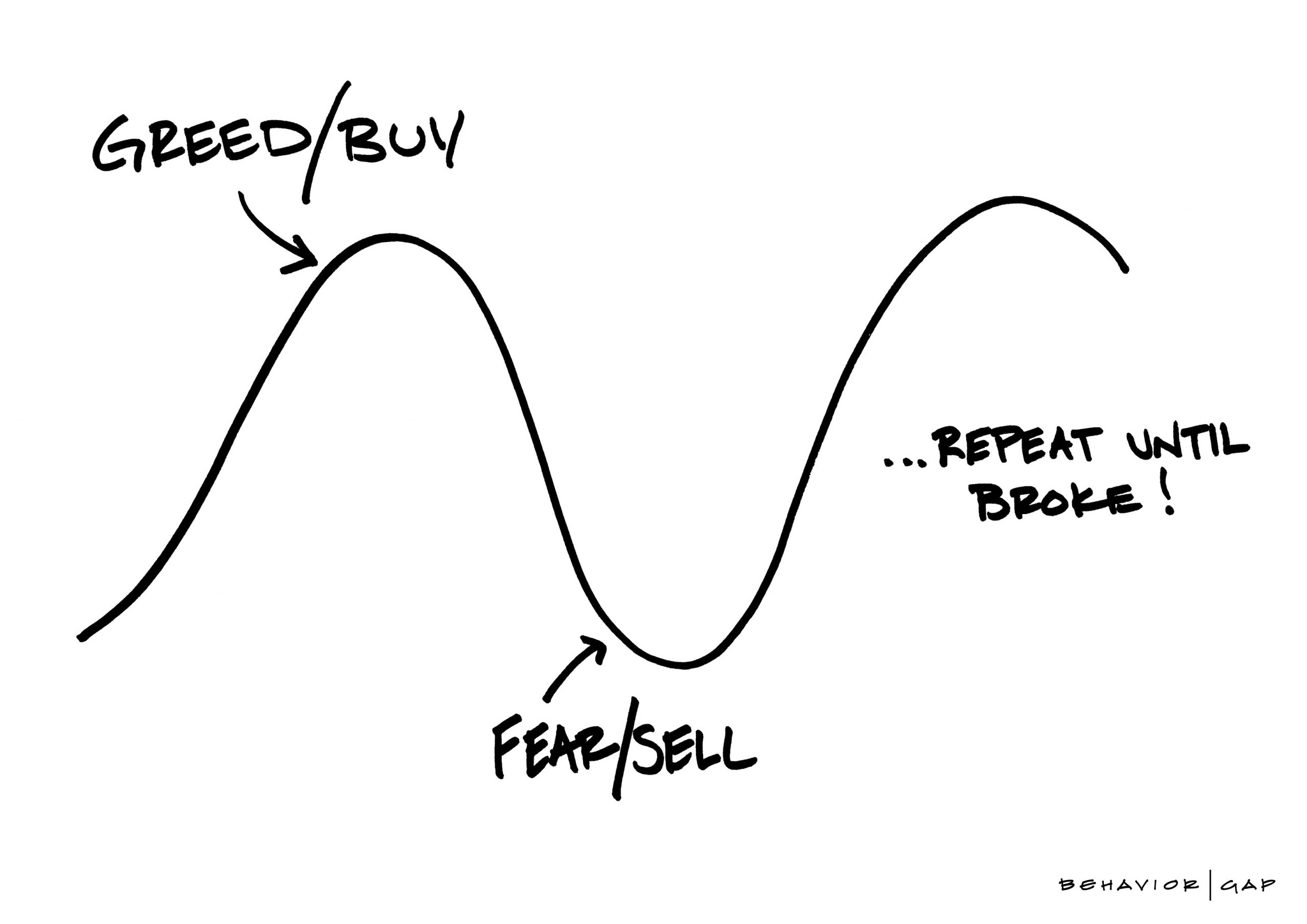Traders playbook – volatility matrix and event risk guide
It’s a strange moment for markets, with equity looking more vulnerable, especially the NAS100, while other markets (like the S&P500 and DAX) are testing trend support. The USD sits at the weakest level since September 2018, while gold closed above $1900 for the first time since 2011. As the event risk ramps up this week, we ask whether volatility kicks back in and whether storms clouds are starting to descend over markets.
If we turn to the USDX, on Friday many (including yours truly) had expected a bounce off the March low, but price cut clean through and as we see in the sub-chart, price closed out Friday on its session low.

Conversely, EURUSD closed right on its session highs. If the USD bulls wanted to defend the March low they didn’t put up much of a fight. Granted, EU PMI’s were better-than-expected but the market continued to bid up EUR’s even after the data dropped – looking at the TFF (Traders for Financial Futures) report, asset managers have never held a bigger EUR long position than they do now. Hard to bet this trend in EURUSD, but that trend is mature and the risk of EUR longs taking profits is elevated.
(Top pane – futures positions from leveraged accounts, lower – asset managers – source: TFF report)

(Source: Bloomberg)
I remain a EUR bull but as I say there is a pullback coming, the question is to what extent – as per the vol matrix, on the week I’d certainly be looking sniffing around into 1.1555, while should we see moves sub-1.1490 I am a buyer with conviction. The market puts a 10% probability we trade sub-1.15 so the chance of buying dips here would be a clear surprise.
(Weekly FX volatility matrix)

What is on the radar that could impact?
We stay politically sensitive this week, with US Phase 4 fiscal negotiations firmly underway and headlines out put us on alert for plans from Senate Republicans in the session ahead. While we hear the REPs will include $1200 stimulus checks in the program, it may still be a tall order to think we get enough convergence between the GOP and the DEMs, especially on aspects like unemployment benefits, to obtain full Congressional sign-off by the end of July expiry.
Watch USDCHF and USDJPY as two hedges against no political resolution, notably USDCHF, which, while oversold is eyeing the March low of 0.9180. USDJPY has found good support into 106, but a break here and I am holding shorts for 104.50. I like selling strength in both pairs.
US-China relations
The market has shown an increased sensitively to US-China relations, so any further escalations could see risk against the ropes – Once again the NAS100 will be most sensitive in equity land to the narrative and consider the options market is pricing a 3.9% move (higher or lower) on the week – while the AUD and CAD look vulnerable on the weekly timeframes. I am watching EURAUD longs, as a base is building, but we need a closing break through 1.6420 and the 200-day MA and we may start to see trending conditions and I will very much be a part of that.

For index traders do consider the corporate reporting calendar. This Thursday aftermarket (from 6 am AEST Friday) we see Apple, Alphabet and Amazon all report in the after-market session. For context, with a handful of other names due to report, this represents some 35% of the NAS100 index weighting reporting in that narrow window. Now given the implied move on the day (derived from options pricing) is 4.3%, 5% and 6.4% respectively, it’s not hard to believe we could see some big moves in the market.
Monday
Germany – IFO survey (18:00aest) – the survey is split into ‘business climate’, ‘expectations’, and ’current assessment’ and all three sub-surveys are expected to improve. Good numbers should reinforce the notion that the EUR deserves to be above 1.15. That said, given how extended the EUR move is poor numbers will be a trigger for those looking for mean reversion. The 5-day EMA still guides the EURUSD trend, but price has closed above this short-term average for 11 straight sessions and the elastic band is primed and ready to go – as always, timing is key.
US – As mentioned, we should get the Republican plan for Phase 4 stimulus. We also get US durable goods (June -22:30 aest) – consensus is for 7% growth.
Tuesday
US – July consumer confidence (00:00aest) – consensus is for the index to fall from 98.1 to 94.4. Not a data point that tends to move markets despite its importance. Depending on the outcome (vs consensus) on this occasion, this has the potential to move the dial.
Wednesday
Australia – Q2 CPI (11:30aest) – arguably the highlight on the Aussie calendar, with consensus calling for headline CPI to fall 2% QoQ and 0.2% YoY. The trimmed mean print is eyed at 0.1% QoQ and 1.3% YoY – should these calls play out it would represent the biggest decline in inflation since 1953 and could cause some immediate vol in the AUD pairs, although I’d be fading any major moves as its unlikely to alter the RBA’s thinking. Keep an eye on AUDJPY, where price has rejected 76.70 and where a move through 74.76 would be something I’d be interested in trading from the short side.
Thursday
US – FOMC meeting (04:00 aest) – the marquee event risk for traders. Little is expected, but we know a change in the Fed’s framework for stronger forward guidance is coming, with the Fed laying a platform for a major change in either the September or November FOMC meeting. As detailed in prior commentary the Fed is reviewing its framework to move to an average inflation targeting framework, which would allow inflation to move above 2% for an extended period before hiking rates. They may use the ‘dot plot projection’ to strengthen this action, moving the long-term dot to 2% (from 2.5%). Expectations of a change are pushing real rates lower and weighing on the USD and supporting gold – however, if the Fed shows a limited willingness to move the framework in September then it could trigger USD short-covering and see gold under pressure.
US – Q2 GDP – consensus is for a 35% contraction QoQ (economist range -40% to -26.2%) – the consensus here is in-line with the Atlanta Fed GDP tracker (-34.7%), yet while this is an ugly number lets consider the market is looking into Q3 and not in the rear-view mirror. Let’s also consider that the GDP print will be subject to some sizeable revisions, so despite the market learning just how bad Q2 was, unless it really misses, then I would like to believe this will not be a volatility event for markets. Looking forward the NY Fed see Q3 GDP at 13.31%, while Larry Kudlow has detailed he sees 20% GDP growth in Q3 and Q4.
US – also at 22:30 aest, we get weekly jobless claims and core PCE inflation
Friday
China – Manufacturing and services PMI (11 am aest) – the market expects the index at 50.8 (from 50.9) in the manufacturing print. I would hesitate to feel this is a vol event, so while it is important in the scheme of things, unless its significant miss/beat that I’d have limited issues holding exposures over this event risk.
Eurozone – Q2 GDP – consensus is for -12% QoQ and -14.5% YoY, while we also get July EZ CPI estimates (consensus 0.3% YoY)
Canada – May GDP (22:30 aest) – the market expects 3.5% MoM growth, and a contraction of 14.7% YoY. I can’t get enthused about GDP being a vol event, so hesitate at believing it will materially impact the CAD.















